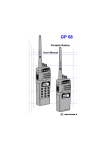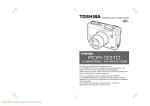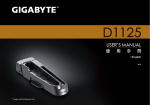Download GIGABYTE I1520M User Guide Manual
Transcript
Copyright © 2010 GIGABYTE TECHNOLOGY CO., LTD. All Rights Reserved GIGABYTE i1520 Series Notebooks User’s Manual Date Issued: 2010/04 This manual takes you, step by step, through setting up and using your new Notebook PC. Information in this manual has been carefully checked for accuracy and is subject to change without prior notice. No part or parts of this manual may be reproduced, stored in a retrieval system, or transmitted, in any form or by any means, electronic, mechanical, by photocopy, recording, or otherwise, without prior written consent. Trademarks Product names used herein are for identication purposes only and may be the trademarks of their respective companies. Microsoft® , MS-DOS, Windows® , and Windows® Sound System are trademarks of the Microsoft Corporation. Intel® & Atom™. are registered trademarks of Intel Corporation. Sound Blaster & Sound Blaster Pro are trademarks of Creative Technology. All other brands or product names mentioned in this manual are trademarks or registered trademarks of their respective companies. Downloaded from LpManual.com Manuals General Safety Precautions In order to ensure your safety and the safety of you notebook, we ask that your carefully follow these safety precautions. English CAUTION: Using your notebook for long periods of time, with the base resting directly on exposed skin, can cause injury, burns or discomfort from the heat buildup that is generated from the base of your portable computer. I ● ● ● ● ● ● After removing the notebook from the box, please ensure that all packaging materials are kept out of the reach of small children as they can cause a potential choking hazard. The packaging materials should be safely stored away in the event that it may be used again for safe transportation of the notebook. Ensure that the AC Adapter and power cable are placed in a safe area where it cannot be tripped over or stepped on. The AC Adapter should be situated in a well ventilated area and should have nothing resting on or covering it. Before turning on the notebook, ensure that it is placed on a level surface with at least 10 cm of clearance around the air vents, which will aid in proper cooling. Do not obstruct the air vents of the notebook and do not insert any foreign objects into this space. Doing this may cause a short circuit or may cause the CPU fan to malfunction, resulting in the risk of a fire or electric shock. This may eventually render permanent damage to the notebook. Do not press or touch the display panel. Only use the AC Adapter that is provided with the notebook or that which is recommended by the manufacturer. Using non- Downloaded from LpManual.com Manuals ● ● ● ● ● recommended or non-approved parts may cause damage or increase the risk of a fire or explosion. In the event that another AC Adapter is required, advice should be sought from a GIGABYTE service agent, in order to make sure that the correct part is recommended. Please follow the battery installation guidelines. Incorrect installation of batteries may increase the risk of a fire or explosion. Only replace old batteries with the same or an alternative compatible battery that is recommended by GIGABYTE or an authorized GIGABYTE Service Centre. Before connecting the notebook to the power outlet, make sure that the voltage rating of the AC Adapter is compatible with the power specification in the country where you are located. A detailed list of the power specification for different countries can be found on page 39. When using an extension cord, please make sure that the total sum of ampere ratings for all connected devices does not exceed the total ampere capacity for the circuit. Before removing the battery from the notebook, make sure firstly that the notebook is switched off and secondly that the AC Adapter is disconnected from the electrical wall socket. Once this is done, it would be safe to remove the battery. Do not carry the notebook battery, loose, in your handbag, backpack or pocket where loose metal objects (money, keys, chains, pens, etc) may be present. The metal objects can short circuit the terminals of the battery resulting in overheating that could cause a fire hazard. In the event that you need to transport the battery separately from the notebook, please place it inside an anti-static bag. i1520 SERIES USER’S MANUAL Discard old worn out batteries according to the instructions on Page VI. Never throw batteries into a fire as this can cause an explosion. Never attempt to repair or service the notebook yourself. Please refer all repairs and servicing to qualified service personnel at a GIGABYTE Authorized Service Centre. ● ● Travel Tips Although notebooks are designed to be as robust as possible to cater for a mobile lifestyle, extreme care and caution should be taken when travelling. When travelling by land, sea or air, every precaution should be taken to make sure that the notebook is well secured when it is not in use. ● ● ● The most essential accessory you should have when travelling is a good carry case for your notebook. The case should be well padded to protect your notebook from drops and bumps, etc and should be big enough to hold the size of notebook. Make sure there is enough room to carry your AC Adapter and spare battery etc. Only carry the necessary items in your carry case, as the weight can become tedious especially when walking long distances or waiting in long queue’s. When travelling by air, never book your notebook with checked baggage. Always declare it as hand baggage so that you can carry it into the airplane cabin with you. Most airlines allow two pieces of hand baggage with one of them being a bag or carry case with a portable notebook. Please consult your local airline for more details. ● When placing your notebook on an X-Ray, make sure that you keep Downloaded from LpManual.com Manuals ● ● ● a close eye on it when it is on the conveyor belt. Hold on to your notebook until the last minute before placing it on the conveyor. In some airports it could be stolen while you are stuck in a queue waiting to pass through the metal detector. Notebooks and hard drives can pass through X-Ray machines but never allow these to pass through a metal detector. This can cause data loss to the hard drive. Never place your notebook in the overhead storage compartment as this can make it susceptible to damage caused by turbulence that may be experienced during the flight or in other case theft. You can store your notebook under your seat, where it is always in sight. You should take every precaution to protect your notebook from dust, dirt, liquid spillage, food droppings, extreme weather conditions and direct exposure to sunlight. When travelling between different climates, from one extreme to another, condensation may occur inside the notebook. If this does happen, please allow sufficient time for the moisture to evaporate completely, before attempting to switch on. When travelling from extremely colder to extremely warmer climates in a short space of time, and vice versa, please allow the notebook some time to adapt to the change in environment. Usage Tips ● When unplugging the power connector from the notebook, please hold and pull on the connector or the strain relief loop to disconnect. Do not pull the power cord itself as this can cause damage to the cable or the notebook. ● In the event of an electrical storm, please disconnect the notebook from the power source and unplug any network or English ● ● II telephone cables that may be connected to the notebook. ● Do not use the notebook near water sources, like bathtubs, English III washing basins, kitchen or laundry sinks or swimming pools. Liquid that can spill onto the notebook by accident can cause electric shock to you and damage to the notebook. Cleaning Tips When cleaning the notebook, please make sure that the notebook is switched off and disconnected from the power source and that the battery is removed. Notebook Cover: Use a microfiber or lint free soft cotton cloth and kitchen detergent (mix 5 parts water to 1 part detergent). ● Wet the cloth and wring out all excess liquid and wipe the surfaces clean. ● Take extra care to make sure that the cloth is damp and not very wet, especially when cleaning around the air vents and other openings as too much liquid in the cloth could drip onto the external components causing damage to the notebook. ● Do not clean the keyboard with this liquid. Keyboard: ● It is advisable to use a can of compressed air to clean debris that maybe caught underneath the keys. ● Isopropyl alcohol can be used to clean the keys by dipping a lint free soft cloth into it, wringing out the excess liquid and wiping the keys. ● Allow to dry for at least 5 minutes. Downloaded from LpManual.com Manuals i1520 SERIES USER’S MANUAL Be careful when using Isopropyl Alcohol as this is a flammable liquid. Please keep away from children, naked flames or a notebook that is switched on. Downloaded from LpManual.com Manuals Warranty Guidelines All warranty repairs and service must be carried out by a GIGABYTE Authorized Repair Centre. GIGABYTE Limited Warranty GIGABYTE warrants, that the GIGABYTE branded Notebook/Netbook is free of any defects in materials and workmanship under normal use during the warranty period. ● All GIGABYTE supplied AC adapters and batteries carry a 1 year limited warranty. ● The warranty is effective from date of purchase. ● If proof of purchase cannot be shown, then the warranty will be determined based on the date of manufacture. ● The limited warranty is only valid for GIGABYTE branded or supplied hardware. ● In the event that a defect arises in materials or workmanship and proof is shown of this defect, GIGABYTE will, through its authorized service provider or partner, repair the product at no extra charge, using new or refurbished replacement parts in order to fulfill the warranty obligations. ● If, during the warranty period, GIGABYTE or its service provider is unable to repair the product, the product will be replaced with a comparable product that is new or refurbished. English LCD: ● It is best to use a microfiber cloth to clean the surface of the LCD. ● If there are any marks or stains present, it would be wise to use commercially available LCD cleaning kit. When using a commercially available LCD cleaning kit, never spray the liquid directly onto the screen. You must spray it onto the cleaning cloth and then wipe the screen clean. ● If this is not available then you can mix 50% isopropyl alcohol and 50% distilled water to clean the surface of the LCD screen. ● Dip the lint free soft cotton cloth into the solution, wringing out excess liquid. ● The cloth must be damp but not dripping with liquid. ● Take care not to let any excess liquid drip into the notebook. ● Start from the top of the LCD surface and wipe from side to side. ● Continue with this until the entire LCD surface has been cleaned. ● Wipe the display with a clean, dry lint free soft cotton or microfiber cloth. ● Wait for the LCD surface to dry completely and then close the lid. IV Regulatory Notices Warranty Limitations The GIGABYTE Limited Warranty does not cover the following… English V ● Software, including the operating system and applications supplied with the product. This also includes third party software that may be installed after purchase. ● Third party hardware, products and accessories not supplied by GIGABYTE. This also includes third party hardware that may be bundled with the notebook or netbook. ● Products with missing or defaced labels and/or serial numbers ● Products damaged by environmental factors, which include oxidation ● Products damaged by natural disasters or acts of God. ● Physical Damages which include, but not limited to, the following: ► Unauthorized modifications, repairs or servicing ► Misuse, abuse, neglect or failure to follow instructions in the user manual. Improper assembly Damages caused by transport due to improper packaging or mishandling by the courier company unless transport is part of the warranty conditions in certain countries. ► Electric damage resulting from faulty or failed electric power or power surges. ► Damaged or cracked components ► Liquid damage ► ► Downloaded from LpManual.com Manuals Federal Communications Commission Notice This equipment has been tested and found to comply with the limits for a Class B digital service, pursuant to Part 15 of the FCC rules. These limits are designed to provide reasonable protection against harmful interference in a residential installation. Any changes or modifications made to this equipment may void the user’s authority to operate this equipment. This equipment generates, uses, and can radiate radio frequency energy. If not installed and used in accordance with the instructions, may cause harmful interference to radio communications. However, there is no guarantee that interference will not occur in a particular installation. If this equipment does cause harmful interference to radio or television reception, which can be determined by turning the equipment off and on, the user is encouraged to try to correct the interference by one or more of the following measures: ● Reorient or relocate the receiving antenna. ● Increase the separation between the equipment and receiver. ● Connect the equipment into an outlet on a circuit different from that towhich the receiver is connected. ● Consult the dealer or an experienced radio/TV technician for help. ● All external cables connecting to this basic unit must be shielded. For cables connecting to PCMCIA cards, see the option manual or nstallation instructions. i1520 SERIES USER’S MANUAL RF Exposure CE Notice (European Union) This symbol indicates this Booktop i1520 notebook complies with the EMC Directive and the European Union’s Low Voltage Directive. This symbol also indicates that i1520 meets the following technical standards: ● EN 55022 — “Limitations and Methods of Measurement for the Radio Interferences of Information Technology Equipment.” ● EN 55024 — “Information technology equipment - Immunity characteristics - Limits and methods of measurement.” ● EN 61000-3-2 — “Electromagnetic compatibility (EMC) - Chapter 3: Limits - Section 2: Limits on the harmonic current emissions (Equipment input current up to and including 16 A per phase).” ● EN 61000-3-3 — “Electromagnetic compatibility (EMC) - Chapter 3: Limits - Section 3: Limits on the voltage fluctuations and flicker in lowvoltage power supply systems for equipment with rate current up to and including 16 A.” Downloaded from LpManual.com Manuals NOTE: EN 55022 emissions requirements provide for two classifications ● Class A governs commercial use ● Class B is governs residential use For CB: ● Only use batteries designed for this computer. The wrong battery type may explode, leak or damage the computer ● Do not remove any batteries from the computer while it is powered on ● Do not continue to use a battery that has been dropped, or that appears damaged (e.g. bent or twisted) in any way. Even if the computer continues to work with a damaged battery in place, it may cause circuit damage, which may possibly result in fire. ● Recharge the batteries using the notebook’s system. Incorrect recharg- ing may make the battery explode. ● Do not try to repair a battery pack. Refer any battery pack repair or ● ● ● ● replacement to your service representative or qualified service personnel. Keep children away from, and promptly dispose of a damaged battery. Always dispose of batteries carefully. Batteries may explode or leak if exposed to fire, or improperly handled or discarded. Keep the battery away from metal appliances. Affix tape to the battery contacts before disposing of the battery. Do not touch the battery contacts with your hands or metal objects. English This equipment must be installed and operated in accordance with provided instructions and must not be co-located or operating in conjunction with any other antenna or transmitter. End-users and installers must be provide with antenna installation instructions and transmitter operating conditions for satisfying RF exposure compliance. VI Battery Disposal & Caution English VII The product that you have purchased contains a rechargeable battery. The battery is recyclable. At the end of its useful life, under various state and local laws. It may be illegal to dispose of this battery into the municipal waste stream. Check with your local solid waste officials for details in your area for recycling options or proper disposal. BSMI Notice (Taiwan Only) Most i1520 computers are classified by the Bureau of Standards, Meteorology and Inspection (BSMI) as Class B information technology equipment (ITE). Danger of explosion if battery is incorrectly replaced. Replace only with the same or equivalent type recommended by the manufacturer. Discard used battery according to the manufacturer’s instructions. The symbol above must be attached to the product indicating compliance with the BSMI standard. Replaceable Batteries If any equipment is provided with a replaceable battery, and if replacement by an incorrect type could result in an explosion (for example, with some lithium batteries), the following applies: ● if the battery is placed in an operator access area, there shall be a marking close to the battery or a statement in boththe operating and the servicing instructions; ● if the battery is placed elsewhere in the equipment, there shall be a marking close to the battery or a statement in the servicing instructions. This marking or statement shall include the following or similar text: CAUTION RISK OF EXPLOSION IF BATTERY IS REPLACED WITH AN INCOMPATIBLE BATTERY TYPE. DISPOSE OF USED BATTERIES ACCORDING TO THE INSTRUCTIONS Downloaded from LpManual.com Manuals i1520 SERIES USER’S MANUAL English Introduction Congratulations and thank you for purchasing the GIGABYTE notebook computer. This portable notebook computer provides excellent multimedia functionality and is designed to provide you reliable, no fuss computing. This manual will explain to you, step by step, how to setup and begin using your i1520. It provides basic configuring, operation, care and troubleshooting guidelines. Downloaded from LpManual.com Manuals VIII Content English IX General Safety Precautions............................................................... I Travel Tips.........................................................................................II Usage Tips........................................................................................II Cleaning Tips...................................................................................III Warranty Guidelines.........................................................................IV Regulatory Notices & Certifications...................................................V Battery Disposal & Caution.............................................................VII Introduction.....................................................................................VIII Chapter 1 Before You Start 1.1 Make Sure You Have Everything.............................................. 4 1.2 Familiarize Yourself with the Computer.................................... 4 1.3 Turning on the Unit................................................................... 5 1.4 Turning off the Power................................................................ 5 1.5 Top View...................................................................................6 1.6 Left View...................................................................................7 1.7 Right View.................................................................................8 1.8 Bottom View..............................................................................8 Chapter 2 Getting Started 2.1 Power Sources........................................................................10 2.2 Recharging the Battery........................................................... 11 Downloaded from LpManual.com Manuals 2.3 2.4 2.5 2.6 Starting Your Notebook........................................................... 12 Switch and Status Indicators................................................... 12 Using Function Keys............................................................... 14 Using the Touchpad................................................................ 15 Chapter 3 Connecting Peripherals and Upgrade 3.1 How To Connect USB Devices............................................... 18 3.2 How To Connect Displays....................................................... 18 3.3 How to Connect an HDMI Display.......................................... 19 3.4 Ethernet LAN Connection....................................................... 19 3.5 How To Secure the Notebook................................................. 20 3.6 Upgrade the Memory.............................................................. 20 3.7 WWAN 3G Connection........................................................... 21 Chapter 4 i1520 Utility 4.1 Configuration Center utility...................................................... 24 4.2 Always-Aware applications..................................................... 25 Chapter 5 GIGABYTE Smart Recovery 5.1 GIGABYTE Smart Recovery................................................... 28 i1520 SERIES USER’S MANUAL Appendix i1520 Specifications................................................................ 38 International Country Voltage................................................. 39 Plug Type................................................................................43 Downloaded from LpManual.com Manuals English Chapter 6 Troubleshooting 6.1 Troubleshooting......................................................................30 6.2 Frequently Asked Questions................................................... 33 6.3 Questions And Answers.......................................................... 35 6.4 The Notebook Care................................................................. 36 6.5 GIGABYTE Service Information.............................................. 36 1 English 2 Downloaded from LpManual.com Manuals i1520 SERIES USER’S MANUAL English Chapter 1 Before You Start This chapter provides basic information to help you get started and to use the i1520 notebook. Some of the features described herein may not function properly or at all unless used in conjunction with the pre-installed operating system. Any change to the operating system may cause improper function. Downloaded from LpManual.com Manuals 3 English 4 1.1 Make Sure You Have Everything 1.2 Familiarize Yourself with the Computer When you receive your notebook PC, unpack it carefully and check to make sure you have all the items listed below. For a preconfigured model you should have the following: Opening the Display Panel To open the display panel, simply lift the lid up. Use one hand to keep the base of the notebook down firmly, and use the other hand to open the display.The hinges are designed to keep the notebook screen closed without the need for a latch. ● GIGABYTE Notebook Computer ● Lithium-Ion Battery ● AC Adapter with Power Cord ● Driver Disc ● Quick Start Guide When closing it, be sure not to slam the display shut as this can damage the display and notebook. Once you have checked and confirmed that your notebook system is complete, read through the following pages to learn about all of your notebook components. NOTE: Depending on the model you purchased, the actual appearance of your notebook may vary from that shown in this manual.These images are for illustration purposes. To install the battery please follow these steps: 1. Slide the battery into the slot until both latches (Shown as A & B) “click” into place. 2. You may hear a “clicking” sound, once the battery is secure. Slide latch 2 to the left to lock the battery in place. 1 A 2 B Downloaded from LpManual.com Manuals i1520 SERIES USER’S MANUAL 1.3 Turning on the Unit 1.4 Turning off the Power Switching on the Power The power indicator will be illuminated when the power is switched on. After you turn on the i1520 for the very first time, do not turn it off until the operating system has been configured. Please note that the volume for the audio will not function until Windows Setup has completed. Booting Up the i1520 for the First Time Depending on your configuration, the Microsoft Windows Boot Screen will be the first screen that you will see as the notebook starts up. Follow the on-screen prompts and instructions and enter your personal information to complete the setup of the Windows Operating Downloaded from LpManual.com Manuals ●If you have unsaved work or are busy, ensure that you save it to the hard disk drive or any other storage device. ● Make sure that the storage device or media are not in use before you remove the media or device. If not done, data loss may occur. ● Make sure that the hard disk indicator light is off. If you turn off the system while is being accessed, data loss can occur and disk damage may occur. ● Never turn off the notebook will any program is running, as doing so may result in data loss or the program no longer working as intended. ● The Shut Down Method is slightly different for each operating system. For Windows 7, use the Start Menu to shut down the system. Under Windows 7, choose the “Shut Down” icon. English System Shut Down When you turn off the power (Shut Down), the system is fully powered off. The notebook will boot normally when switched on again. 5 1.5 Top View The following is an overview of the front of the notebook. 1 English 2 6 8 3 7 4 5 6 NO. Item 3 Stereo Speakers The built-in speaker system features an integrated digital audio controller that produces rich, vibrant sound. 4 Power On Button This button turns your notebook on and off or puts it to sleep. (See Suspend/Power On Button in the Power On section for more information.) 5 Keyboard A full-size keyboard with dedicated Windows® keys. The layout will depend on the region you live in. 6 Touchpad & Buttons The touchpad pointing device is a mouse like cursor control with two buttons and a touch sensitive movement pad. The left and right buttons function like the left and right mouse buttons. 7 Wireless Switch This switch allows you to toggle the notebook PC’s wireless connection. Status Indicator Lights The Status indicator lights correspond to specific operating modes. These modes are: The Caps Lock / Bluetooth Transmission / Hard Disk Drive Activity / Wireless Transmision / Battery / Number Lock. Function 1 Webcam The built-in 1.3 megapixel camera with 2 digital microphones allows you to snap a photo or create a video or hold a video conference or chat with just a click. 2 LCD Display The display panel is a color LCD panel with back lighting for the display of text and graphics. Downloaded from LpManual.com Manuals 8 i1520 SERIES USER’S MANUAL 1.6 Left View i1520N The following is a brief description of the left side of the notebook. NO. Item 2 3 4 5 6 Function 1 External Monitor Port The external monitor port allows you to connect an external monitor. 2 HDMI Port The HDMI port allows you to connect a video device to your computer for outputing a high definition signal. 3 LAN (RJ-45) Port The LAN port is designed to support a 10/100/1000 Base-T standard RJ-45 plug. 4 e-SATA/USB combo port The e-SATA/USB combo port allows you to connect an external device as well as any type of USB device. 5 USB 2.0 Port The USB port allows you to connect a Universal Serial Bus device. It supports v2.0 of the USB standard, which allows data exchange rates as high as 480 Mb/s. 6 Express Card Slot The Express Card Slot allows you to install one Type-II Express Card Slot. 7 Multi Card Reader The memory card reader offers the fastest and most convenient method to transfer pictures, music and data between your notebook and flash compatible devices. Downloaded from LpManual.com Manuals 1 7 NO. Item 2 3 4 5 Function 1 External Monitor Port The external monitor port allows you to connect an external monitor. 2 LAN (RJ-45) Port The LAN port is designed to support a 10/100/1000 Base-T standard RJ-45 plug. 3 USB 2.0 port The USB port allows you to connect a Universal Serial Bus device. It supports v2.0 of the USB standard, which allows data exchange rates as high as 480 Mb/s. 4 Express Card Slot The Express Card Slot allows you to install one Type-II Express Card Slot. Multi Card Reader The memory card reader offers the fastest and most convenient method to transfer pictures, music and data between your notebook and flash compatible devices such as digital cameras, MP3 players, mobile phones, and PDAs. 5 English 1 i1520M The following is a brief description of the left side of the notebook. 7 1.7 Right View 1.8 Bottom View The following is a brief description of the right side of the notebook. The following is an overview of the bottom of the notebook. 1 English 8 1 2 NO. Item 3 5 4 6 3 Function 1 Headphone Jack The headphone jack allows you to connect headphones or external speakers and amplifiers. 2 Microphone Jack The microphone jack allows you to connect an external microphone. 3 USB 2.0 Port The USB port allows you to connect universal serial bus devices. It supports v2.0 of the USB standard, which allows data exchange rates as high as 480 Mb/s. 4 Optical Disc Drive The optical drive allows you to play back and write media discs such as CDs & DVDs. 5 Power Adapter Port The power adapter port allows you to plug in the AC adapter to power your notebook and charge the internal Lithium-Ion battery. Only use certified AC adaptors. ® 6 Kensington Lock Slot The Kensington lock port allows the notebook PC to be secured using Kensington®compatible notebook PC security products, which includes a metal cable and lock that prevent the notebook PC to be removed. Downloaded from LpManual.com Manuals 2 NO. Item Function 1 Battery Bay The battery bay contains the internal Lithium-Ion battery. It can be unlatched for the removal of the battery when stored over a long period of time or for swapping a discharged battery with a charged Lithium-Ion battery, and latched in place again. 2 HDD Compartment Cover The HDD compartment contains the computer's hard disk drive. 3 RAM Compartment Cover The memory compartment contains the computer's memory modules. i1520 SERIES USER’S MANUAL English Chapter 2 Getting Started This chapter will show you the various ports and components of the i1520 and familiarizes you with the notebook. Certain parts of the notebook can be user upgraded while others are fixed and cannot be changed. Downloaded from LpManual.com Manuals 9 2.1 Power Sources Your computer has two types of power sources: a Lithium-Ion battery and an AC adapter. English 10 It is recommended that only the AC adapter supplied with the i1520 is used. Any other adapter could cause damage or malfunction and might result in injury. Connecting the Power Adapters The AC adapter provides power for operating your notebook PC as well as charging the battery. Connecting the AC Adapter 1. Plug the DC output cable into the DC power jack of your. 2. Plug the AC adapter into an AC electrical outlet. Switching from AC Adapter Power to Battery Power 1. Be sure that you have at least one charged battery installed. 2. Remove the AC adapter. Your notebook will automatically switch from DC power to battery power. CAUTION: The Lithium-Ion battery does not ship with a precharge initially. You will need to connect the AC adapter to useyour notebook PC the first time. Downloaded from LpManual.com Manuals 2 1 3 1. Connect the power cord to the AC adapter. 2. Connect the AC adapter to the DC power port of your computer. 3. Connect the AC adapter power cord to an AC outlet. i1520 SERIES USER’S MANUAL 2.2 Recharging the Battery The Lithium-Ion battery is recharged internally using the AC adapter. To recharge the battery, make sure the battery is installed and the computer is connected to the AC adapter. Low Battery State When the battery level is low, a notification message appears. If you do not respond to the low battery message, the battery continues to discharge until it is too low to operate. When this happens, your notebook PC goes into Suspend mode. There is no guarantee your data will be saved once the notebook reaches this point. CAUTION:To protect your notebook from damage, use only the power adapter that came with it because each power adapter has its own power output rating. Once your notebook PC goes into suspend mode as a result of a dead battery, you will be unable to resume operation until you provide a source of power either from an adapter or a charged battery. Once you have provided power, you can press the Suspend/ Resume button to resume operation. In Suspend mode, your data is maintained for some time, but if a power source is not provided promptly, the power indicator stops flashing and then goes out, in which case you have lost the data that was not saved. Once you Downloaded from LpManual.com Manuals Battery Replacement There is danger of explosion if an incorrect battery type is used for replacement. For computers equipped with a replaceable LithiumIon battery pack, the following applies: ● If the battery is placed in an OPERATOR ACCESS AREA, there shall be a marking close to the battery, or a statement in both the operating and the servicing instructions; ● If the battery is placed elsewhere in the computer, there shall be a marking close to the battery or a statement in the servicing instructions. The marking or statement shall include the following or similar text: CAUTION: Risk of explosion if battery is replaced with an incorrect type. Dispose of used batteries according to the instructions. English There is no “memory effect” in Lithium-Ion batteries; therefore you do not need to discharge the battery completely before recharging. The charge times will be significantly longer if your notebook PC is in use while the battery is charging. If you want to charge the battery more quickly, put your computer into Suspend mode or turn it off while the adapter is charging the battery. provide power, you can continue to use your computer while an adapter charges the battery. 11 2.3 Starting Your Notebook English 12 Suspend / Power on Button The suspend/power on switch is used to switch on your notebook from its off state. Once you have connected your AC adapter or charged the internal Lithium-Ion battery, you can power on your notebook by pressing the suspend/power on button located above the keyboard. If you need to take an extended break, press the button again to place the notebook into sleep mode or turn it off. CAUTION: Do not carry your notebook around with the power on or subject it to shocks or vibration, as you risk damaging the hard disk. When you power on your notebook, it will perform a Power On Self Test (POST) to check the internal parts and confguration for correct functionality. If a fault is found, your computer emits an audio warning and/or displays an error message on the display with a description or code. 2.4 Switch and Status Indicators Wireless Switch Wireless Models Only: Toggles the internal wireless LAN or Bluetooth (on selected models) ON or OFF with an on-screen display. When enabled, the corresponding wireless indicator will light. Windows software settings are necessary to use the wireless LAN or Bluetooth. The status indicator lights correspond to specific operating modes. These modes are: The Caps Lock / Bluetooth Transmission / Hard Disk Drive Activity / Wireless Transmision / Battery / Number Lock. Depending on the nature of the problem, you may be able to continue by starting the operating system or by entering the BIOS setup utility and revising the settings. After satisfactory completion of the Power On Self Test (POST), your notebook loads the installed operating system. CAUTION Never turn off your notebook during the Power On Self Test (POST), or an unrecoverable error may occur. NO. Symbol Item 1 Downloaded from LpManual.com Manuals Function This indicator tells you that the The Caps Lock keyboard is set to type in all capital Indicator or uppercase letters. i1520 SERIES USER’S MANUAL 2 4 5 The Bluetooth Transmission Activity Indicator tells you whether Bluetooth network is activated or not. Hard Disk Drive Activity Indicator The Hard Disk Drive (HDD) activity indicator tells you whether your internal hard drive is being accessed and, if so, how fast. Do not switch off the botebook if this light is flashing. Wireless Transmission Activity Indicator The Wireless Transmission Activity indicator tells you whether your computer is connected to a Bluetooth/wireless network or not. Battery Indicator The Battery indicator tells you whether the Lithium-Ion battery is charging or is already fully charged. ● If you are charging your battery, the Battery indicator remains on even if your notebook is shut off. ● If there is no battery activity, the power adapters are not connected, or the power switch is off, the Battery indicator will also be off. ● Batteries subjected to shocks, vibrations or extreme temperatures can be permanently damaged. Downloaded from LpManual.com Manuals 6 This indicator shows when the The Number internal keyboard is in ten-key Lock Indicator numeric keypad mode. English 3 Bluetooth Transmission Indicator 13 2.5 Using Function Keys English 14 Your computer has 12 function keys, F1 through F12. The functions assigned to these keys differ for each application. You should refer to your software documentation to find out how these keys are used. The [FN] key provides extended functions for the notebook and is always used in conjunction with another key. ● [FN+F1]: Places the notebook in Suspend mode. Pressing the Power button returns it to active mode. ● [FN+F2]: Enables or disables the wireless network connection. Press this key combination to enable Wireless LAN connection. ● [FN+F3]: Increases the screen Brightness. ● [FN+F4]: Decreases the screen Brightness. ● [FN+F5]: Allows you to change your selection of where to send your display video. Each time you press the combination of keys you will step to the next choice. The choices, in order, are: built-in display panel only, external monitor only, or both built-in display panel and external monitor. ● [FN+F7]: Mutes the computer’s volume. ● [FN+F8]: Decreases the computer’s volume. ● [FN+F9]: Increases the computer’s volume. ● [FN+F10]: Enables or disables 3G function. (Only for i1520N) ● [FN+F11]: Enables or disables the Bluetooth function. ● [FN+F12]: Enables or disables the built-in camera. ● [FN+7]: Enables or disables Intel’s Configuration Center. ● [FN+^]: Play or Pauses the current/selected multimedia track. ● [FN+v]: Stop the current multimedia track. Downloaded from LpManual.com Manuals ● [FN+<]: Skip Back to the previous multimedia track. ● [FN+>]: Skip Forward to the next multimedia track. i1520 SERIES USER’S MANUAL 2.6 Using the Touchpad A touchpad pointing device comes built into your computer. It is used to control the movement of the pointer to select items on your desktop and use applications on the notebook. Double-Clicking Double-clicking means pushing and releasing the left button twice in rapid succession. This procedure does not function with the right button. To double-click, move the cursor to the item you wish to select, press the left button twice, and then immediately release it. You also have the option to perform the double-click operation by tapping lightly on the touchpad twice. Dragging Dragging means pressing and holding the left button while moving the cursor. To drag, move the cursor to the item you wish to move. Press and hold the left button while moving the item to its new location and then release it. Dragging can also be done using the touchpad. First, tap the touchpad twice over the item you wish to move, making sure to leave your finger on the pad after the final tap. Next, move the object to its new location by moving your finger across the touchpad, and then release your finger. Using the Scroll bar allows you to navigate through a document quickly without using the window's scroll bars. This is particularly useful when you are navigat-ing through on-line pages. Downloaded from LpManual.com Manuals English The touchpad consists of a cursor control, a left and right button, and a scroll bar. The cursor control works the same way a mouse does, and moves the cursor around the display. It only requires light pressure from the tip of your finger. The left and right buttons function the same as mouse buttons. The actual functionality of the buttons may vary depending on the application that is being used. The scroll bar allows you to navigate quickly through pages, without having to use the on-screen cursor to manipulate the up and down scroll bars. Clicking Clicking means pushing and releasing a button. To left-click, move the cursor to the item you wish to select, press the left button once, and then immediately release it. To right click, move the mouse cursor to the item you wish to select, press the right button once, and then immediately release it. You also have the option to perform the clicking operation by tapping lightly on the touchpad once. 15 English 16 Downloaded from LpManual.com Manuals i1520 SERIES USER’S MANUAL English Chapter 3 Connecting Peripherals and Upgrade Downloaded from LpManual.com Manuals 17 English 3.1 How To Connect USB Devices 3.2 How To Connect Displays Connect a USB Device To connect a USB device simply line it up with the USB port on the unit and press it into the port securely. It will only go in one way because of the notching used so ensure that it is lined up correctly and do not force the USB connector into the port if it does not want to go in. USB Devices support Plug and Play and should auto discover inside the units operating system and install drivers or request drivers. Connect an External Display To insert the cable, simply line it up with the port on the side of the i1520 and press it into the port securely. Please note that the port does not have screw pin holes and the connector cannot be screwed into the i1520. Please make sure that the cable is seated firmly and securely. Disconnect a USB Device To remove the device, look for the Safely Remove Hardware icon on the taskbar and open the tool by double clicking with the left mouse button. Select the device you would like to remove and click on stop, and windows will then let you know that it is safe to remove the device, and then pull the cable out of the port. Disconnect an External Display To remove the cable simply grab the head of the cable and gently pull out of the i1520, ensuring that the port is no longer active with a display output. DO NOT pull by the cable itself, this will damage the display cable of the monitor or projector or display device. 18 Downloaded from LpManual.com Manuals i1520 SERIES USER’S MANUAL 3.4 Ethernet LAN Connection Connect an HDMI Display To insert the cable, simply line it up with the HDMI port on the i1520 unit and press it into the port securely. It will click lightly into place when it is inserted properly. Use the operating systems display properties to then get an image on the HDMI Output port. Depending on your configuration the HDMI port can also carry a sound signal. The i1520 features an RJ45 Ethernet port with an integrated LAN controller capable of operational speeds of 10Mbps, 100Mbps or Gigabit (1000Mbps), depending on configuration. Ethernet LAN Connection The built-in LAN controller defaults to Auto Discovery when any LAN cable is connected and will be able to operate on a Peer 2 Peer basis. If the Notebook will be part of a domain, the controller and system settings will need to be configured to connect to the domain network. This will need to be done by the network administrator. The connection speed will also be determined by the cable used and the network hardware that you connect to. For Gigabit (1000Base-T) a CAT5E (Category 5E) Cable is required For 100Mbps (100BASE-T) a CAT5 (Category 5) Cable is required Disconnect an HDMI Display To remove the cable simply grab the head of the cable and gently pull out of the i1520, ensuring that the port is no longer active with a display output. DO NOT pull by the cable itself is this can damage the HDMI cable or the cables connector head as well as the HDMI port. To connect to a LAN, simply take the cable and align it, contacts facing down, and push it into the RJ45 LAN port until it clicks into place. To disconnect, simply push the clip arm down and pull the cable out of the port to remove it. Downloaded from LpManual.com Manuals English 3.3 How to Connect an HDMI Display 19 English 3.5 How To Secure the Notebook 3.6 Upgrade the Memory Connect a Kensington Lock To insert the cable, simply line it up with the Kensington lock with the hole and insert. If you have the key type, turn the key in the lock direction and then remove the key to secure the lock into the hole. If you have the type that uses a combination lock, enter the combination, insert the Kensington lock, turn, and then spin the combination to random numbers to lock. Ensure the other end of the cable is secured to the desk or security lock. To upgrade the memory of the notebook, follow the simple steps below. If you do not wish to do the upgrade yourself you can contact the i1520 supplier for assistance. 1 20 To remove the cable simply insert the key or enter the correct combination, twist in the unlock direction and then pull the lock out of the securing hole on the i1520 Notebook. Downloaded from LpManual.com Manuals 1. Locate the memory bay cover (Shown as 1) - The memory modules and slots are located below this cover. 2. Remove the security screws and use a correct size screwdriver to remove them being sure not to damage the screws. lift the cover off to expose the memory. Locate the empty socket OR populated memory socket. 3. If the slot is empty, places the new or upgrade module on the slot and presses it into the contacts, then you press the chip down and it clips into place. (Reverse these steps to remove a module). Replace and then secure the memory bay cover. i1520 SERIES USER’S MANUAL 3.7 WWAN 3G Connection (Only Optional for i1520N) The i1520, depending on configuration, features a WWAN 3G Connection. This section will briefly explain how to install and set up the WWAN 3G unit if it did not ship with your i1520. To install the 3.5G Mini Card please follow these steps, however if you are not comfortable doing so, please contact the supplier to install the Module for you. Ensure the i1520 is off before proceeding: 1. Remove the Comm. Bay cover shown above to reveal the Mini Card slots. There should be one open slot available. 2. Line up the 3.5G Mini Card with the slot, making sure to check the alignment of the notch, and press the card into the slot. 3. There should be two antenna plug available to plug into the Mini Card to allow for signal reception and transmission - Plug this into the port on the card. Follow the software installation steps. 4. The SIM Card slot is under the battery in the battery bay. Downloaded from LpManual.com Manuals English If you purchased the GIGABYTE WWAN 3G Module separately you should have these items in the package: 1x WWAN 3G Mobile Broadband Card 1x Driver CD 1x Quick Installation Guide 1 2 3 4 21 English 22 Downloaded from LpManual.com Manuals i1520 SERIES USER’S MANUAL English Chapter 4 i1520 Utility Downloaded from LpManual.com Manuals 23 4.1 Configuration Center Utility English 24 The Configuration Center utility provides quick and easy access to notebook configuration settings that help: optimize battery life, increase performance and enhance overall notebook experience. Configuration Center allows quick selection of the current power plan and extends power options configuration settings. In addition, Configuration Center provides direct control over notebooks devices and options. You could Press Fn+Home to launch Configuration Center. Power Plan Icons There are six different icons to indicate the six pre-defined power plans: High performance, Power saver, Balanced, Presentation, Night download and Away. Move mouse on an icon, it will be enlarged and the name of power plan will be displayed. There will be a smooth animation and other icons are pushed aside Six Mode Definition Six mode definition High Performance: Favors performance, but may use more energy. Power saver: Saves energy by reducing your computer’s performance where possible. Balance: Automatically balances performance with energy consumption on capable hardware. Presentation: Automatically switch to secondary display or projector when they are connected. Night Download: Optimize for low energy consumption and quiet operation at night. Away: Enable Always-Aware alarm and turn off unused devices to extend battery life while away form the system. Add New Power Plan Click dropdown list at the right corner of Configuration Center, select "Manage Power Plans", click "Create a power plan" from the left side bar, then follow Windows prompts to create a new power plan. The new power plan will be shown up at Configuration Center with a new icon. A total of six customized power plans can be added and shown at Configuration Center included with the six pre-defined ones. Downloaded from LpManual.com Manuals Quick Device Control Quick Device Control provides direct access to the Windows Mobility Center and extended properties and devices. Use the items to quickly configure and notebook devices. i1520 SERIES USER’S MANUAL 4.2 Always-Aware Applications *Always-Aware feature is only available on i1520N To configure the Always-Aware Alarm settings double click the taskbar icon or open the context menu (right mouse button) associated with the taskbar icon and select Open....This will open the Always-Aware Alarm settings dialog, the Configuration tab will be shown. If the taskbar icon is not showing start the service by selecting the Always-Aware Alarm item from Start->All Programs>Always-Aware Applications. Smart Disk The application protects the notebook HDD from damage caused by sudden harmful notebook shocks. It monitors system movements that exceed the defined shock threshold. Once a shock is detected above the threshold, the application instructs the HDD to temporarily park it’s heads which protects against potential damage the drive. When the notebook motion stabilizes the heads are then un-parked. Downloaded from LpManual.com Manuals English The Always-Aware applications add new capabilities to the notebook by sensing notebook motion. The applications use an accelerometer within the notebook to detect motion. The applications include: SmartDisk and SmartAlarm. Smart Alarm The feature attempts to assist the user in detection of unwanted movement of the notebook. The user can arm the Alarm feature in conjunction with their locking of their system, logging off lock or via a dedicated key sequence. Once armed the user must then disarm the alarm through standard Windows logon process. Notebook movement detected prior to disarm will cause an audio alarm to sound. 25 English 26 Downloaded from LpManual.com Manuals i1520 SERIES USER’S MANUAL English 27 Chapter 5 GIGABYTE Smart Recovery Downloaded from LpManual.com Manuals 5.1 GIGABYTE Smart Recovery English 28 System Recovery - Restore your I1520 operating system. The hard drive of the I1520 has a hidden partition that contains a full backup image of the operating system that can be used to recover the system in the event that something happens to the operating system. 4.The "Recovering" window will open and begin the recovery. If the hard drive is removed or the partition deleted, the recover options will no longer be available and a recovery service will be needed. Launch System Recovery The system recover feature is part of the netbook installation and it ships preset from the factory. The options menu allows you to launch the Windows recovery tool to reinstall the operating system to factory defaults. Below will briefly describe how to launch the recovery tool and to get the recovery started. 1.Turn off or restart the netbook. 2.Turn the netbook on and press and hold the F9 key to launch the tool. 3.The recovery window will open and give you the option to "Recovery" in the toolbar. You will be prompted if you want to recovery. Click on "Recovery" to begin the repair if you do. Downloaded from LpManual.com Manuals 5.O nce it is complete you will be prompted to reboot the netbook. i1520 SERIES USER’S MANUAL English Chapter 6 Troubleshooting This section will briefly cover some frequently encountered problems and questions and provide a quick guide to assist with solve these problems. Most problems can be resolved quickly, simply and easily and are not always a system problem. Should you encounter a problem that is not yet or differently listed, please consult the GIGABYTE website or call your unit supplier for assistance. For website assistance go to the support section of www.gigabyte. com.tw for telephonic assistance please call the supplier of your unit or take the unit to the supplier directly for assistance. Downloaded from LpManual.com Manuals 29 6.1 Troubleshooting Warning: Under the condition that you can’t handle problems, please contact to your dealer to get professional assistance and service. English 30 AC Adapter Trouble Battery life depends on usage conditions of the Notebook. You can change the settings in the Power Manager of the OS to save power. Battery life is not as long as it should be Solution Make sure the AC adapter is well connected to the power source and notebook. No power supplied Check the cable and plug to make sure they are to notebook ok. If they are broken, please contact your local dealer ASAP. Battery Pack Trouble Solution The remaining power in battery pack may not No power supplied be sufficient to power the machine. Please to notebook connect the AC adapter to recharge it. Check temperature of battery pack’s surface. Battery pack can’t be recharged if its temperature is too high or too low. Recharge it only after its temperare has reached the same level as the environment. Can’t be recharged If battery pack is fully discharged, it won’t be after connecting recharged at once. Please wait for a few some AC adapter minutes. If the power indicators of the battery pack are always not lit up, its life may be over. Please contact your dealer to buy another one. Downloaded from LpManual.com Manuals Battery pack can’t exert its full capacity if it works when not fully recharged frequently. Power notebook by battery pack until its power drops to a critically low level and the machine emits a high-pitched beep or displays a warning message; after that, recharge battery packs to make battery pack work longer. WARNING: Please pay attention to the following information regarding the battery pack: 1. Be sure to recycle the waste batteries property. 2. Do not place the batteries near high-temperature locations, fire source or in burning fire as this may cause the batteries to explode 3. Do not assemble/disassemble /modify the batteries without authorization. 4. Use the battery pack provided by the original manufacturer only. Batteries other than those supplied by the original manufacturer may damage the device. Keyboard Trouble Solution Press character keys but number displayed Check if Num Lock is activated. instead of character Confusing display Make sure there is no software to configure the keyboard. i1520 SERIES USER’S MANUAL WARNING: Please pay attention to the following information about keyboard maintenance. Hard disc drive (HDD) Trouble Solution The operating system is corrupted by incorrect operation or virus. Try to clean the virus and then configure your operating system HDD can’t be booted correctly. Maybe the files for the Operating system are corrupt; please refer to the manual of your OS. HDD performs very slowly There is too much file fragment. Use disk defrag tools to rearrange the programs on the hard disk. WARNING: Please pay attention to the following information about Hard Drive maintenance. 1. The hard disk is a high-speed data storage device. Avoid using the Notebook in unstable locations as far as possible to prevent hard disk damage and data loss. 2. P lease use the computer in accordance with normal startup/shutdown procedures; improper startup/shutdown may shorten the service life of the hard disk. Downloaded from LpManual.com Manuals Trouble The screen is blank Solution Press hot key Fn + F5 to change the display mode if certain external monitor is connected. Make sure the system isn’t in the mode of Hibernation or Standby. WARNING: Please pay attention to the below points on the mounting design of the panel for the LCD module. 1. Do not put heavy force along the edges of the active area. 2. Do not put a heavy shock or stress on the panel and film surface. 3. Do not put heavy goods on the display panel. 4. T he LCD screen is the most fragile component of the Notebook and is prone to damage under external forces. Do not place any object on the keyboard or between the keyboard and the screen to prevent damage to the LCD screen. 5. W hen traveling with GIGABYTE Notebook, place it in a special case in a tidy manner as far as possible. Excess objects may squeeze the machine and therefore damage the LCD screen. 6. D o not touch the screen with sharp objects or fingers directly. 7.It is recommended that the LCD screen be wiped with a special screen cleaning cloth. Wipe the screen gently to avoid breakage of the screen. 8. Prevent any liquid from entering the LCD screen as this may damage the elements of the LCD screen. English 1. Dust build-up may occur in the keyboard after long-term use. It is recommended to clean the keyboard with a small brush. Please shut down the machine before cleaning the surface of the keyboard and wipe it with a soft cloth, dipped in cleaner or water, very gently. 2. In a case that liquid enters the keyboard, shut off the power supply immediately, remove the battery and contact the original manufacturer directly for repair. Do not disassemble the keyboard yourself for repair. LCD 31 Printer Trouble English 32 The data can’t be sent from notebook to printer Error printing USB Solution Make sure its cable is ok and its USB interface is well connected to Notebook. Equipments connected can’t work Make sure your printer is compatible with your notebook. Check and be sure USB port of Notebook is firmly connected with the USB cord of the equipment. Be sure the driver of the equipment is installed correctly. Stand by / Hibernation Solution Please check if the Windows Media Player is running. If Yes, the Notebook Can’t enter into Standby/ can’t enter into Standby or Hibernation Hibernation mode. Adjust sound controller. Trouble Solution Please close Windows Media Player. Check the setting of sound volume of the software or os. No sound emitted Solution Please refer to the user’s manual of your printer for help. Audio Trouble Trouble Make sure the printer is powered on. Check if the ear phone is firmly connected. LAN Check the Devices Manager of Windows. Be sure the Sound function has been activated and isn’t interfering with other hardware. Trouble Solution Can’t be connected Be sure the RJ45 connector is firmly connected to the network hub or switch. Downloaded from LpManual.com Manuals i1520 SERIES USER’S MANUAL 6.2 Frequently Asked Questions My computer LCD Display Panel switches off much too quickly and I have to constantly hit a key or move the mouse to bring back the screen. What can I do? I’ve heard that cleaning and rearranging files on the hard drive will improve program’s launch speed. How do I do this? Good disk maintenances can improve program launch speed. This normally includes deleting unnecessary files, and defragmenting the hard disk so the files can be more efficiently grouped. Windows contains maintenance based utilities for these tasks; run Disk Cleanup to remove unnecessary files, and Disk Defragmenter to defragment fragmented file blocks. For more info on these utilities, please refer to your Windows documentation or Windows help. What kind of external microphone can I use with my notebook computer? You will need to use a self-amplifying microphone. Downloaded from LpManual.com Manuals Double click on the Speaker icon on the task bar. Then, under the Microphone Balance, check the Mute box. Because of a software problem, I was unable to shut the computer down from Windows, I pressed the power button to power off the computer, but it didn’t work. How can I force a power off computer switches to hibernation mode much too quickly and I have to constantly hit a key or move the mouse to bring back the screen. What can I do? Make sure you press the power button for at least 4 seconds. Normally, this will force the computer to shut off completely. Why can’t I charge the battery of my notebook computer after it is out of use for some time? After your notebook computer has not been used for a long time (for example: more than one month), the battery will enter into low voltage protection mode. Under this circumstance, restoring to normal voltage will require the battery to be slowly charged for several hours. Once the battery has been fully charged, your computer will resume to normal operation sure you press the power button for at least 5 seconds. Normally, this will force the computer to shut off completely. English This is part of Windows Power Management. Access Power Management by clicking on Start / Control Panel / Performance and Maintenance / then Power Options, and change the time next to the “Turn off Monitor” option to the time you want. You have the choice of either adjusting time for the power supply or for the battery. There are echoes coming from my speakers. What can I do? 33 My computer says: “CMOS Battery Low”, what should I do? English 34 If your computer is without power (i.e. unplug the computer power source from the power outlet and remove the battery pack from it) for over 45 days, you would lose the information stored in CMOS. Please follow the steps below to reconfigure your CMOS settings: step1. Press F2 to enter into the BIOS setup utility. step2. S elect “Load Optional Defaults?” When you see the following prompt, choose <OK> and then press <Enter>. step3. S elect “Save Changes and Exit”, select <OK> and press <Enter> to restart your computer How to unplug or eject devices? 1. In the notification area next to your task bar, double-click on the Safe Removal icon. Safe removal displays a list of Plug and Play devices that support safe removal and that are currently attached to the system. If you do not see the Safe Removal icon, your device does not support safe removal, and you cannot unplug or eject your device using Safe Removal. 2. In Safely Remove Hardware, in the list of devices, select the device that you want to unplug or eject, and then click on Stop. This tells the system that you will be unplugging or ejecting the device. 3. In Stop a Hardware device, click OK. A notification appears stating that it is now safe to unplug or eject the device. Downloaded from LpManual.com Manuals Caution •Unplugging or ejecting a device that supports safe removal without first than using the Safe Removal application to warn the system can cause data to be lost or your system to become unstable. For example, if a device is unplugged during a data transfer, data loss is likely. If you use Safe Removal, however, you can warn the system before you unplug or eject a device, preventing possible loss of data. if you use Safe Removal, however, you can warn the system before you unplug or eject a device, preventing possible loss of data. Note •For removable storage devices that can safely be removed while the system is on, the system disables write caching by default. It does this so the devices can be removed without loss of data. When write caching is disabled, however, the system will likely experience slower performance, so be sure to enable write caching when you have finished removing the device. Does the i1520 provide a hardware switch or function button to enable/disable the Bluetooth function? the i1520 provides a combined function button to enable/disable the 3.5G (Fn+F10) and Bluetooth (Fn+F11) functions. i1520 SERIES USER’S MANUAL What is the capacity of SDHC cards that i1520 can support? How can i1520 BIOS be upgraded in the DOS and Windows mode? Please refer to GIGABYTE website “How to upgrade i1520 BIOS in the DOS and Windows mode?” 6.3 Questions and Answers Q: I can feel a mild heat next to the battery pack. Is this normal? A: The battery will generate heat during recharging and discharging. There is a protection circuit inside the Notebook to prevent overheating. User needs not worry. Q: My battery operation time is not as long as it should be. Why? A: The battery is heat sensitive and can only be charged to its maximum if the battery and its environmental temperature remain within 15-25°C (59-77°F). The more the temperature deviates from this range during recharging, the less chance there is for the battery to be fully charged. In order to recharge the pack to its full capacity, users are requested to cool down the unit by unplugging the AC Adapter. Wait until it is cooled down. Then plug in the AC Adapter to start recharging again. Downloaded from LpManual.com Manuals A: The batteries will self-discharge when they are not being recharged. To make sure a battery pack is fully charged, recharge before use. Always keep the battery inside the Notebook and have the AC adapter connected whenever possible. Q: I did not use my spare battery for months. I have a problem with recharging it. A: If you happen to leave your battery pack to go through an extended period of self-discharge, say more than three months, the battery voltage level will become too low and needs to be Pre-Charged (to bring the battery voltage level high enough) before it automatically (for Li-Ion only) resumes its normal Fast Charge. Pre-Charge may take 30 minutes. Fast Charge usually takes 2~3 hours. English The specification of SDHC that i1520 SD card reader supports shall be in accordance with that of the SD Association. Currently, the maximum capacity announced by SD Association is 32GB http://www.sdcard.org/developers/tech/sdhc/ Q: I did not use my spare battery for a few days. Even though it was fully recharged, there wasn’t as much power left as a newly charged one. Why? 35 English 36 Your notebook PC is sturdy and subject to few problems in the field. However, you may encoun-ter simple setup or operating problems that you can solve on the spot, or problems with periph-eral devices, that you can solve by replacing the device. The information in this section helps you isolate and resolve some of these straightforward problems and identify failures that require service. 6.4 Identifying The Problem If you encounter a problem, go through the following procedure before pursuing complex troubleshooting: 1.Turn off your notebook. 2.Make sure the AC adapter is plugged into your notebook and to an active AC power source. 3.Make sure that any card installed in the PC card slot is seated properly. You can also remove the card from the slot, thus eliminating it as a possible cause of failure. 4.Make sure that any devices connected to the external connectors are plugged in properly. You can also disconnect such devices, thus eliminating them as possible causes of failure. 5.Turn on your notebook. Make sure it has been off at least 10 seconds before you turn it on. 6.Go through the boot sequence. 7.If the problem has not been resolved, contact your support representative. Before you place the call, you should have the following information ready so that the customer support representative can provide you with the fastest possible solution: Downloaded from LpManual.com Manuals ● Product name ● Product configuration number ● Product serial number ● Purchase date ● Conditions under which the problem occurred ● Any error messages that have occurred ● Hardware configuration ● Type of device connected, if any See the configuration label on the bottom of your notebook for configuration and serial numbers. Copyright-protected technology This product incorporates copyright protection technology that is protected by U.S. patents and other intellectual property rights. Use of this copyright protection technology must be autho-rized by Macrovision, and is intended for home and other limited viewing uses only unless otherwise authorized by Macrovision. Reverse engineering or disassembly is prohibited. 6.5 GIGABYTE Service Information More service information please link to GIGABYTE official website: www.gigabyte.com.tw i1520 SERIES USER’S MANUAL English Appendix Downloaded from LpManual.com Manuals 37 i1520 Specifications Specifications i1520M English 38 CPU i1520N Intel® Core™ i7 / i5 / i3 processor ® Intel® Core™ i7 / i5 / i3 processor OS Genuine Windows 7 Compliant Genuine Windows® 7 Compliant LCD Display 15.6" WXGA HD(1366x768) LED backlight 15.6" WXGA HD(1366x768) LED backlight System Memory DDRIII SO-DIMM 1333MHz*2 (Max 8GB) DDRIII SO-DIMM 1333MHz*2 (Max 8GB) ® Chipset Mobile Intel HM55 Express Chipsets Mobile Intel® HM55 Express Chipsets Video Graphics Intel® HD Graphics witth dynamic frequency NVIDIA® GeForce® GT 330M Hard Disk Drive 320/500GB 2.5" SATA HDD 320/500GB 2.5" SATA HDD Optical Drive 12.7mm Super Multi DVD RW 12.7mm Super Multi DVD RW USB(2.0)*4, D-Sub, RJ45, Mic-in, Earphone-out, 3-in-1 Card Reader(SD/MMC/MS), Express card slot, DC-in Jack 2 Watt Speakers*2, Internal Mic-in Communications 10/100/1000Mbps Ethernet Base-T 802.11b/g/n Wireless Bluetooth Webcam Security Battery Build-in V2.1 + EDR 1.3 Mega Pixel HDD Password, Kensington Lock Li-ion 6-cell, 2400mAh USB(2.0)*3(eSATA/USB Combo*1), HDMI, D-Sub, RJ45, Mic-in, Earphone-out, 3-in-1 Card Reader(SD/MMC/MS), Express card slot, DC-in Jack 2 Watt Speakers*2, Internal Mic-in 10/100/1000Mbps Ethernet Base-T 802.11b/g/n Wireless 3.5G Antenna build-in, 3.5G Module supported Build-in V2.1 + EDR 1.3 Mega Pixel HDD Password, Kensington Lock Li-ion 6-cell, 2400mAh Dimensions 389(W) x 249(D) x 34.5(H) mm 389(W) x 249(D) x 34.5(H) mm Weight ~2.6kg (w/ODD and battery) ~2.6kg (w/ODD and battery) I/O Port Audio Downloaded from LpManual.com Manuals i1520 SERIES USER’S MANUAL International Country Voltage Region Voltage 240V 220V 230V 120V 230V 220V 110V 230V 220V 230V 127V 230V 230V 220V 220V 120V 230V 220V 220V 115V 220V 230V 110V / 220V 220V 120V 230V 220V 127V 220V 231 V 127V / 220 V Downloaded from LpManual.com Manuals Frequency 50 Hz 50 Hz 50 Hz 60 Hz 50 Hz 50 Hz 60 Hz 60 Hz 50 Hz 50 Hz 60 Hz 50 Hz 50 Hz 50 Hz 50 Hz 60 Hz 50 Hz 50 Hz 50 Hz 50 Hz 50 Hz 50 Hz 60 Hz 50 Hz 60 Hz 50 Hz 50 Hz 50 Hz 50 Hz 50 Hz 60 Hz Region Brunei Bulgaria Burkina Faso Burundi Cambodia Cameroon Canada Canary Islands Cape Verde Cayman Islands Central African Republic Chad Channel Islands Chile China (mainland only) Colombia Comoros Congo-Brazzaville Congo-Kinshasa Cook Islands Costa Rica Côte d'Ivoire Croatia Cuba Cyprus Czech Republic Denmark Djibouti Dominica Dominican Republic East Timor Voltage 240V 230V 220V 220V 230V 220V 120V 220V 220V 120V 220V 220V 230V 220V 220V 120V 220V 230V 220V 240V 120V 230V 230V 110V 240V 230V 230V 220V 230V 110V 220V Frequency 50 Hz 50 Hz 50 Hz 50 Hz 50 Hz 50 Hz 60 Hz 50 Hz 50 Hz 60 Hz 50 Hz 50 Hz 50 Hz 50 Hz 50 Hz 60 Hz 50 Hz 50 Hz 50 Hz 50 Hz 60 Hz 50 Hz 50 Hz 60 Hz 50 Hz 50 Hz 50 Hz 50 Hz 50 Hz 60 Hz 50 Hz English Afghanistan Albania Algeria American Samoa Andorra Angola Anguilla Antigua Argentina Armenia Aruba Australia Austria Azerbaijan Azores Bahamas Bahrain Balearic Islands Bangladesh Barbados Belarus Belgium Belize Benin Bermuda Bhutan Bolivia Bonaire Bosnia Botswana Brazil 39 Region English 40 Ecuador Egypt El Salvador Equatorial Guinea Eritrea Estonia Ethiopia Faroe Islands Falkland Islands Fiji Finland France French Guiana Gaza Strip Gabon Gambia Georgia Germany Ghana Gibraltar Greece Greenland Grenada Guadeloupe Guam Guatemala Guinea Guinea-Bissau Guyana Haiti Voltage 120V 220V 115V 220V 230V 230V 220V 220V 240V 240V 230V 230V (formerly 220V) 220V 230V 220V 230V 220V 230V (formerly 220V) 230V 240V 230V (formerly 220V) 220V 230V 230V 110V 120V 220V 220V 240V 110V Downloaded from LpManual.com Manuals Frequency 60 Hz 50 Hz 60 Hz 50 Hz 50 Hz 50 Hz 50 Hz 50 Hz 50 Hz 50 Hz 50 Hz 50 Hz 50 Hz 50 Hz 50 Hz 50 Hz 50 Hz 50 Hz 50 Hz 50 Hz 50 Hz 50 Hz 50 Hz 50 Hz 60 Hz 60 Hz 50 Hz 50 Hz 60 Hz 60 Hz Region Honduras Hong Kong Hungary Iceland India Indonesia Iran Iraq Ireland Isle of Man Israel Italy Jamaica Japan Jordan Kazakhstan Kenya Kiribati Kuwait Kyrgyzstan Laos Latvia Lebanon Lesotho Liberia Libya Lithuania Liechtenstein Luxembourg Macau S.A.R. of China Voltage Frequency 110V 60 Hz 220V 50 Hz 230V (formerly 220V) 50 Hz 230V 50 Hz 220V 50 Hz 127V / 230V 50 Hz 220V 50 Hz 230V 50 Hz 230V (formerly 220V) 50 Hz 240V 50 Hz 230V 50 Hz 230V (formerly 220V) 50 Hz 110V and 220V 50 Hz 100 V 50 Hz / 60Hz 230V 50 Hz 220V 50 Hz 240V 50 Hz 240V 50 Hz 240V 50 Hz 220V 50 Hz 230V 50 Hz 220V 50 Hz 240V 50 Hz 220V 50 Hz 120V / 240V 50 Hz 127V 50 Hz 230V (formerly 220V) 50 Hz 230V 50 Hz 230V (formerly 220V) 50 Hz 220V 50 Hz i1520 SERIES USER’S MANUAL Region Voltage 220V 127V / 220 V 220V 230V 240V 230V 220V 230V 220V 220V 230V 127V 120V 220-230V 127V / 220 V 230 V 220V 230V 127V / 220 V 220V 230V 220V 240V 230V 230V (formerly 220V) 127V / 220V 220V 230V 120V 220V Downloaded from LpManual.com Manuals Frequency 50 Hz 50 Hz 50 Hz 50 Hz 50 Hz 50 Hz 50 Hz 50 Hz 50 Hz 50 Hz 50 Hz 60 Hz 60 Hz 50 Hz 50 Hz 50 Hz 50 Hz 60 Hz 50 Hz 50 Hz 50 Hz 50 Hz 50 Hz 50 Hz 50 Hz 50 Hz 50 Hz 50 Hz 60 Hz 50 Hz Region Nigeria North Korea Norway Okinawa Oman Pakistan Panama Papua New Guinea Paraguay Peru Philippines Poland Portugal Puerto Rico Qatar Réunion Romania Russian Federation Rwanda St. Kitts and Nevis St. Lucia (Winward Is.) St. Vincent (Winward Is.) São Tomé and Príncipe Saudi Arabia Senegal Serbia Seychelles Sierra Leone Singapore Slovakia Voltage 240V 220V 230V 100 V 240V 230V 110V 240V 220V 220V 220V 230V 220V 120V 240V 220V 230V (formerly 220V) 220V 230V 110V / 230V 240V 230V 220V 127V / 220V 230V 220V 240V 230V 230V 230V Frequency 50 Hz 50 Hz 50 Hz 60 Hz 50 Hz 50 Hz 60 Hz 50 Hz 50 Hz 60 Hz 60 Hz 50 Hz 50 Hz 60 Hz 50 Hz 50 Hz 50 Hz 50 Hz 50 Hz 60 Hz 50 Hz 50 Hz 50 Hz 60 Hz 50 Hz 50 Hz 50 Hz 50 Hz 50 Hz 50 Hz English Macedonia Madagascar Madeira Malawi Malaysia Maldives Mali Malta Martinique Mauritania Mauritius Mexico Micronesia Moldova Monaco Mongolia Montenegro Montserrat (Leeward Is.) Morocco Mozambique Myanmar/Burma Namibia Nauru Nepal Netherlands Netherlands Antilles New Caledonia New Zealand Nicaragua Niger 41 Region English 42 Slovenia Somalia South Africa South Korea Spain Sri Lanka Sudan Suriname Swaziland Sweden Switzerland Syria Tahiti Taiwan Tajikistan Tanzania Thailand Togo Tonga Trinidad & Tobago Tunisia Turkey Turkmenistan Uganda Ukraine United Arab Emirates United Kingdom United States of America Uruguay Voltage Frequency 230V 50 Hz 220V 50 Hz 220V 50 Hz 220V 60 Hz 230V (formerly 220V) 50 Hz 230V 50 Hz 230V 50 Hz 127V 60 Hz 230V 50 Hz 230V 50 Hz 230V 50 Hz 220V 50 Hz 110V / 220V 60 Hz / 50 Hz 110V 60 Hz 220V 50 Hz 230V 50 Hz 220V 50 Hz 220V 50 Hz 240V 50 Hz 115V 60 Hz 230V 50 Hz 230V 50 Hz 220V 50 Hz 240V 50 Hz 220V 50 Hz 220V 50 Hz 230V (formerly 240V) 50 Hz 120V 60 Hz 230V (formerly 220V) 50 Hz Downloaded from LpManual.com Manuals Region Uzbekistan Vanuatu Venezuela Vietnam Virgin Islands Western Samoa Yemen Zambia Zimbabwe Voltage 220V 230V 120V 220V 110V 230V 230V 230V 220V Frequency 50 Hz 50 Hz 60 Hz 50 Hz 60 Hz 50 Hz 50 Hz 50 Hz 50 Hz i1520 SERIES USER’S MANUAL Plug Type Country Plug Type Plug Picture Connector Type LP-30B LS15 English USA Connector Picture Japan LP-54 LS15 43 Taiwan LP-53 LS15 China PC-323 LS15 Korea LP-E04 LS15 LP-60L LS15 PE-364 LS15 PE-361 LS15 Canada England Singapore South Africa Downloaded from LpManual.com Manuals Australia LP-23A LS15 Germany English 44 France Sweden Finland Norway LP-33 LS15 Belgium Netherlands Austria Switzerland LP-37 LS15 Denmark LP-38 LS15 PE-336 LS15 Italy Downloaded from LpManual.com Manuals






















































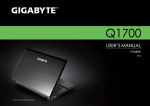

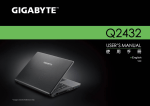
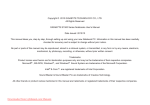
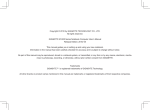
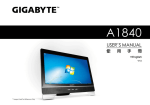
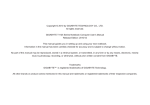
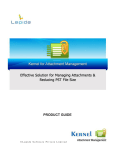

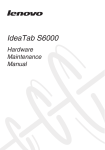
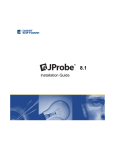
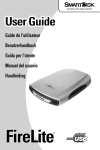
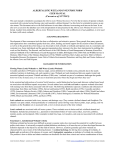
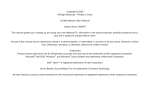
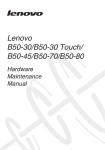
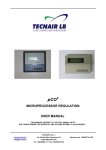

![[PDF:1.8MB]](http://vs1.manualzilla.com/store/data/005708629_1-c6bdf3b3035e2fb2adedb53e84bf3717-150x150.png)
